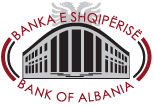Former Dajti Hotel Building
A short history
Built in the 1930s by Gherardo Bosio, a Florentine architect of the 20th century rationalist school, and designed by Gio Ponti, father of modern European design, the building is just a short distance from the Bank of Albania headquarters.


Featuring a large surface area and considering its physical location, it meets Bank of Albania's requirements for expanding its structure. It will also contribute to its commitment to being a transparent and open institution to the public.
From the historical perspective, Dajti Hotel represents one of the most prominent and coveted buildings to the people of Tirana. It featured elegant and high-level furnishings of a sophisticated kind.


At the regional level, it was for a long time considered the most modern hotel in the Balkans.

Reconstruction of the building
In the framework of restoring the building, the Bank of Albania has designed the project of the building to service central bank's activities. Despite the damages suffered during the past years, the project foresees restoring the building to its original state and splendour, and adjusting it to service central bank's operations.
The restoration project is based on the original design of architect Gherardo Bosio, but adjusted to the standards of the new century, together with the green surroundings.


Featuring a very rich library, this building will be a window ensuring direct contact with the public, particularly researchers, academics, students and the media.
Featuring a large surface area and considering its physical location, it meets Bank of Albania's requirements for expanding its structure.
Acquisition of the building
The rapid quantitative and qualitative developments in Bank of Albania's activities have called for additional bank facilities required to help it conduct its day-to-day operations. Its unique representation functions, the ever-increasing functional demands, the numerous Bank of Albania’s commitments in international activities, the essential information technology requirements, and a number of other reasons, dictated the need for additional facilities at central bank's disposal.
Bank of Albania Supervisory Council Decision on the acquisition of former Dajti Hotel building
At its meeting of 16 June 2010, the Supervisory Council of the Bank of Albania examined and approved the Decision on "Approving the direct procurement procedure for the acquisition of the former Dajti Hotel building, a state property, by the Bank of Albania, at a limit amount of ALL 4,148,400,000.
Given the growing needs of the Bank of Albania for additional facilities to carry out its daily operations, and in order to meet the requirements for contemporary labour conditions standards for central banking, the Supervisory Council decided to acquire the former Dajti Hotel building. Based on letter "c", paragraph 4 of Article 1, and letter "c", Article 4 of Law No. 8269, dated 23.12.1997 "On the Bank of Albania", which provides for the right of the Bank of Albania to acquire, when considered as necessary and appropriate by the Bank, immovable property in order to facilitate, provide and manage its operations, the Council decided to acquire the former Dajti Hotel building.
The Supervisory Council considers that this building provides adequate construction areas, surrounding environments, location and well-known historical values. Along with the existing Bank of Albania's headquarters, the two buildings will provide a long-term solution to central bank's needs for working facilities, and full support in carrying out its activities.
The acquisition of the former Dajti Hotel building is, therefore, one of the strategic moves of the Bank of Albania for a long-term and fine solution to providing new facilities, which will further complement its headquarters' infrastructure. This acquisition will also improve Bank Albania's alignment with the European Central Bank.
Following this acquisition, the Bank of Albania presently owns two of the most prominent buildings of the Albanian capital, Tirana. It is the central bank's task to quickly restore the original splendour of the two buildings by making them valuable parts of Tirana's cultural and architectural heritage.

 Linkedin
Linkedin
 Twitter
Twitter
 Facebook
Facebook
 Instagram
Instagram
 Flickr
Flickr
 RSS
RSS
 Subscribe
Subscribe
 Feedback
Feedback